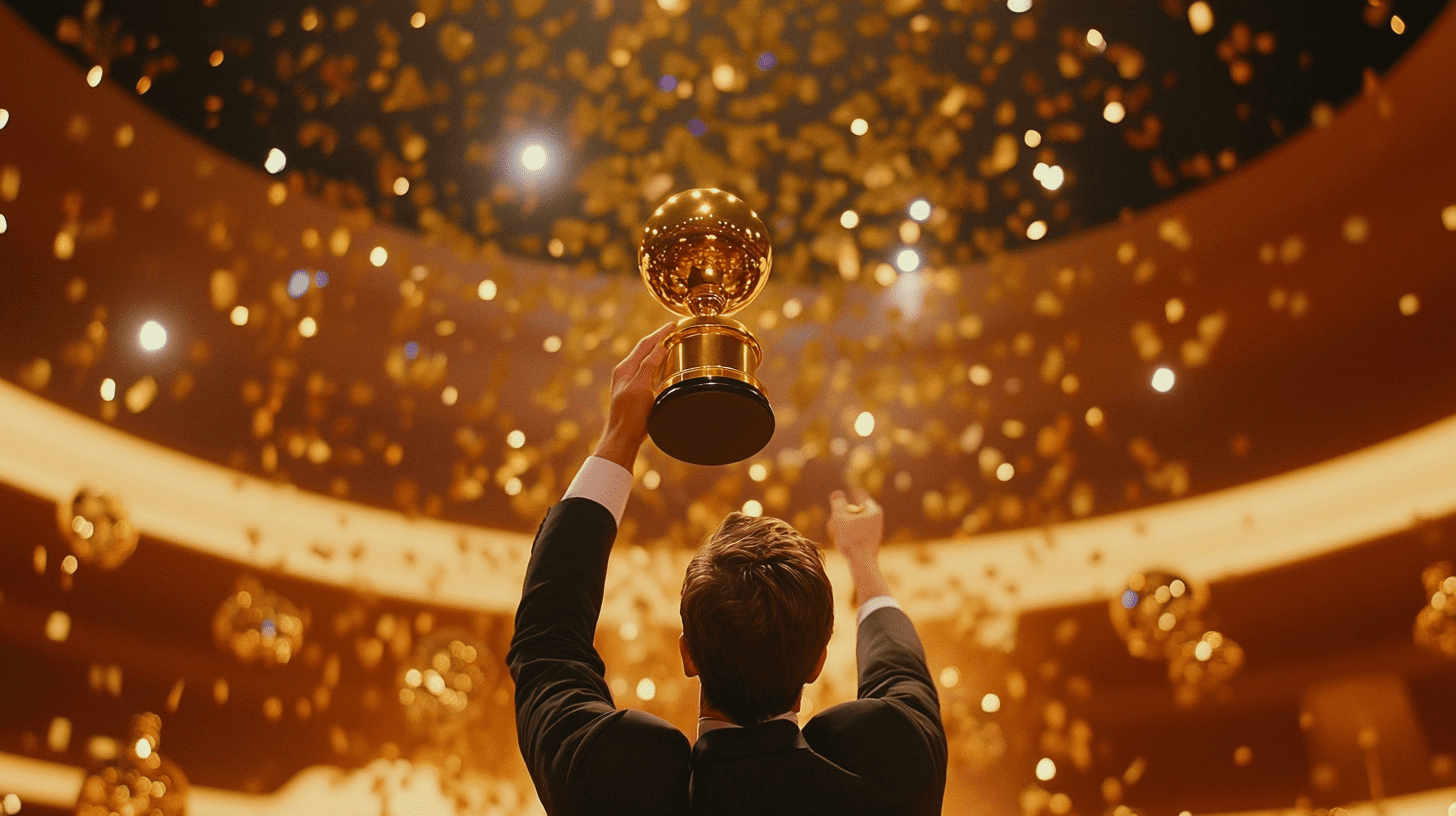
What's After the Blog?
History • Technology
The Evolution of Documentary Filmmaking Techniques
Explore the fascinating evolution of documentary filmmaking techniques, from early silent films to modern digital innovations, and their impact on storytelling and society in our comprehensive blog post.
October 2, 2024

The Evolution of Documentary Filmmaking Techniques
Introduction
The world of documentary filmmaking has undergone a remarkable evolution since its inception, transforming from the early days of simple, static shots to complex, multi-layered narratives that engage and challenge audiences. Documentaries, at their core, are the art of capturing reality, but the way filmmakers have approached this task has varied widely throughout the history of cinema. This evolution has been driven by technological advancements, cultural shifts, and the ever-changing landscape of human experience. The significance of documentaries in society cannot be understated; they serve not just as a mirror reflecting societal changes but also as a catalyst for conversation and change. From the gripping rawness of war documentaries to the intimate portrayals in biographical pieces, the genre has been a powerful medium for storytelling, education, and advocacy.
The Origins of Documentary Filmmaking
The genesis of documentary filmmaking can be traced back to the early 1900s, a time when film was still a new and evolving medium. The earliest documentaries were more observational, focusing on capturing life as it was. Films like Nanook of the North (movie_title) and Man with a Movie Camera (movie_title) are seminal works from this era, setting the foundation for future filmmakers. These films were characterized by their straightforward approach – often unobtrusive and purely observational. Nanook of the North, for example, is often cited as the first feature-length documentary. Released in 1922, it chronicled the life of an Inuk man named Nanook and his family in the Canadian Arctic. The film was groundbreaking in its depiction of an unfamiliar culture and way of life, offering audiences a glimpse into a world they had never seen before. However, it also raised questions about the authenticity and ethics in documentary filmmaking, as some scenes were staged for the camera, blurring the line between reality and representation. Man with a Movie Camera, on the other hand, was a 1929 Soviet film that took a radically different approach. Directed by Dziga Vertov, it was a montage of urban life in the Soviet cities, showcasing Vertov’s experimental approach to cinematography and editing. The film lacked a conventional narrative or characters, focusing instead on the daily lives of citizens and the rhythm of the city. Vertov’s techniques, including fast cutting, split screens, and varying speeds, were innovative for the time and had a lasting impact on the documentary genre.
These early documentaries laid the groundwork for the genre, demonstrating the potential of film to document reality and tell stories about the world and its people. They also highlighted the challenges inherent in capturing truth on film, a theme that would continue to evolve and be debated throughout the history of documentary filmmaking.
The Transition to Sound and Color
The introduction of sound and later color into filmmaking marked a significant turning point in the documentary genre. These technological advancements allowed filmmakers to present a more complete and immersive representation of reality. Sound, in particular, added a new dimension to documentaries, enabling the inclusion of voices, ambient sounds, and music which greatly enhanced the storytelling capabilities of the genre. Color, too, brought a new layer of realism and vibrancy to documentaries, making them more engaging and relatable to audiences.
One of the early pioneers in this era was Robert Flaherty, who, after Nanook of the North, went on to make Moana (movie_title) in 1926, one of the first documentaries to incorporate synchronized sound. However, it was not until the 1930s and 1940s that sound became a standard feature in documentaries. Films like Triumph of the Will (movie_title) and Night Mail (movie_title) utilized sound not only to provide information but also to create a more emotionally resonant experience. Triumph of the Will, for instance, used powerful speeches and music to create a propagandist piece that was both influential and controversial.
The advent of color further transformed the documentary landscape. The Living Desert (movie_title) and The Vanishing Prairie (movie_title), both produced by Disney in the 1950s, were among the first full-color nature documentaries. These films showcased the beauty and diversity of the natural world in vibrant color, captivating audiences and setting a new standard for nature documentaries.
”How has technology influenced documentary filmmaking?”
Technological advancements have had a profound impact on documentary filmmaking, constantly pushing the boundaries of what’s possible in capturing and presenting reality. From the first portable cameras and sound recorders to the latest digital technologies, each technological leap has expanded the filmmaker’s toolkit, enabling more intimate, dynamic, and creative storytelling.
The introduction of portable cameras and sync sound in the 1960s, for example, gave birth to the Direct Cinema movement in the United States and the Cinéma Vérité in France. Films like Primary (movie_title) and Chronicle of a Summer (movie_title) exemplified this approach, offering a more spontaneous and immersive view of their subjects. These technologies allowed filmmakers to capture life as it happened, with minimal intrusion and manipulation.
In the digital age, the impact of technology on documentaries has been even more transformative. Digital cameras have made filmmaking more accessible and affordable, leading to an explosion of independent and experimental documentaries. Editing and post-production techniques have also evolved, allowing for more sophisticated storytelling. Furthermore, the internet and streaming platforms have revolutionized the distribution and consumption of documentaries, making them more accessible to a global audience.
Technological advancements have not only changed how documentaries are made but also how they are experienced by audiences. Virtual reality, for instance, is opening up new possibilities for immersive documentary storytelling, allowing viewers to step into the world of the film in a way that was previously impossible. As technology continues to evolve, it will undoubtedly bring new innovations and challenges to the art of documentary filmmaking.
The Rise of Cinéma Vérité
The 1960s marked the emergence of Cinéma Vérité, a documentary movement that aimed to capture the truth of life as it unfolded, unscripted and unadorned. This style of filmmaking was heavily influenced by advancements in portable cameras and sound recording equipment, which allowed filmmakers to immerse themselves in the environment of their subjects. The essence of Cinéma Vérité lies in its raw, candid approach to filmmaking, where the presence of the camera is acknowledged, and interactions between the filmmaker and the subject are often part of the narrative.
Key figures in this movement include Jean Rouch, whose film Chronicle of a Summer (movie_title) is a seminal work in the Cinéma Vérité style. Rouch used his camera to provoke and record genuine reactions and discussions among his subjects, blurring the line between observer and participant. Another landmark film, Don’t Look Back (movie_title) by D.A. Pennebaker, chronicled Bob Dylan’s 1965 tour in England, capturing the raw energy and complexity of its subject in a way that traditional documentaries could not.
Cinéma Vérité challenged the conventions of documentary filmmaking, offering a more dynamic and interactive approach. It emphasized the importance of the filmmaker’s perspective and the interaction between the filmmaker and the subject. This approach brought a new level of intimacy and immediacy to documentary films, allowing audiences to feel closer to the subjects and the issues being explored.
The Modern Documentary: A Blend of Techniques
Contemporary documentary filmmaking is characterized by a rich blend of styles and techniques, drawing from the traditions of both observational cinema and Cinéma Vérité, as well as incorporating elements of narrative storytelling. Modern documentaries often combine interviews, archival footage, animation, and re-enactments to create more layered and complex narratives. This eclectic approach allows filmmakers to explore their subjects in greater depth and from multiple perspectives, offering a more nuanced and multifaceted view of the world.
Examples of this modern approach can be seen in films like The Act of Killing (movie_title) and Waltz with Bashir (movie_title). The Act of Killing challenges former Indonesian death-squad leaders to re-enact their mass-killings in the style of Hollywood movies, creating a surreal and disturbing commentary on violence and history. Waltz with Bashir, on the other hand, uses animation to explore the memories and experiences of Israeli soldiers in the 1982 Lebanon War, blending reality and memory in a unique way.
The influence of digital media and the internet is also evident in modern documentary filmmaking. The availability of digital platforms has made it easier for filmmakers to distribute their work and reach a wider audience. It has also encouraged a more interactive form of documentary, where viewers can engage with the content in different ways, often blurring the line between documentary and other forms of digital media.
The evolution of documentary filmmaking continues to be a reflection of the times, adapting to new technologies, changing social contexts, and the ever-evolving human experience. As the genre continues to evolve, it promises to keep offering fresh and insightful perspectives on the world around us.
”What are the ethical considerations in documentary filmmaking?”
Ethical considerations are central to documentary filmmaking, given its inherent claim to represent reality. The genre poses unique challenges in balancing truthful representation with storytelling. As documentarians capture real people and events, questions often arise about the portrayal of subjects, the filmmaker’s bias, and the manipulation of footage and narrative to create a more engaging story. These ethical dilemmas are crucial, as documentaries can significantly influence public opinion and have real-world impacts.
The responsibility of representing the truth is paramount. Documentaries like Blackfish (movie_title) and The Thin Blue Line (movie_title) not only brought attention to specific issues but also prompted real change. However, the representation of reality is subjective, and the filmmaker’s perspective inevitably shapes the narrative. For instance, Super Size Me (movie_title) was criticized for its approach to exploring the fast-food industry, with some arguing that it oversimplified complex health and dietary issues. Filmmakers must navigate these ethical waters carefully, balancing the need to tell a compelling story with the responsibility of fair and accurate representation.
The Future of Documentary Filmmaking
Looking to the future, documentary filmmaking is poised to continue evolving, embracing new technologies and storytelling techniques. Emerging trends suggest an increasing use of virtual reality (VR) and interactive documentaries, offering audiences more immersive and participatory experiences. VR documentaries like Clouds Over Sidra (movie_title) provide a powerful sense of presence and empathy, placing viewers directly in the context being explored.
Another trend is the growing intersection between documentary and other genres. Hybrid forms, which blend documentary and fictional elements, are becoming more common, challenging traditional notions of what a documentary can be. Films like Stories We Tell (movie_title) weave together reality and reconstruction in innovative ways, creating narratives that are both personal and universal.
The rise of streaming platforms is also shaping the future of documentaries. These platforms provide filmmakers with new avenues for distribution and audiences with unprecedented access to a diverse range of documentary films. The success of documentaries on these platforms indicates a growing appetite for factual storytelling and may lead to more investment and experimentation in the genre.
As we look ahead, the possibilities for documentary filmmaking are as vast as the realities they seek to capture. With each technological advancement and creative innovation, documentaries will continue to evolve, offering new insights into our world and the human condition.
ATM’s Spotlight on Documentaries
At What’s After the Movie (ATM), we recognize the profound impact and importance of documentaries in cinema. Our platform highlights a diverse range of documentaries, each offering a unique lens on the world. From historical documentaries that provide insight into past events to contemporary pieces that tackle pressing issues of the modern world, ATM’s collection is a testament to the power and diversity of the genre.
Documentaries featured on ATM, such as An Inconvenient Truth (movie_title) and Food, Inc. (movie_title), exemplify the genre’s ability to educate, inform, and inspire action. These films are not just about presenting facts; they’re about telling stories that matter, stories that have the power to initiate change. By providing detailed information about each documentary, including directorial techniques, thematic exploration, and the impact of the film, ATM offers an enriched viewing experience, allowing users to appreciate the depth and complexity of documentary filmmaking.
Conclusion
The evolution of documentary filmmaking techniques mirrors the evolution of our collective human experience. From the early days of silent, static shots to the dynamic, immersive experiences of modern documentaries, the genre has continually adapted to represent the multifaceted reality of our world. Documentaries are more than just a record of events; they are a powerful medium for storytelling, education, and advocacy, capable of influencing public opinion and sparking change.
As technology advances and societal contexts shift, documentary filmmaking will continue to evolve, embracing new possibilities and challenges. The genre’s future is as exciting as its past is rich, promising continued innovation in how we document, understand, and engage with the world around us. At ATM, we are excited to be a part of this journey, bringing a wide range of documentaries to our users and contributing to the ongoing conversation about the importance and impact of this vital genre.
Continue reading

What's After the Movie?
Not sure whether to stay after the credits? Find out!
Check out our other apps:
Actors
Companies
Latest Movies
© 2024 What's After the Movie?. All rights reserved.



